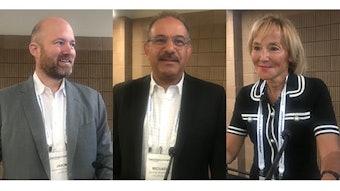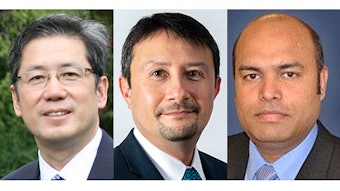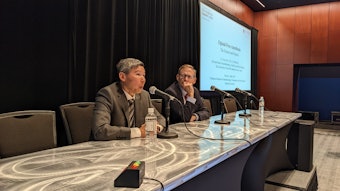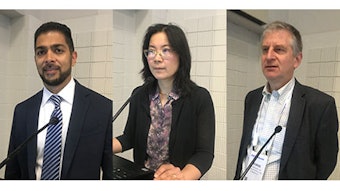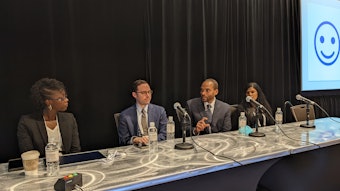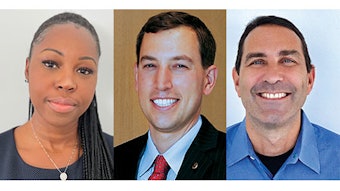Guy L. Weinberg, MD, delivers 2022 Severinghaus Lecture
The surprising path to resolving LAST
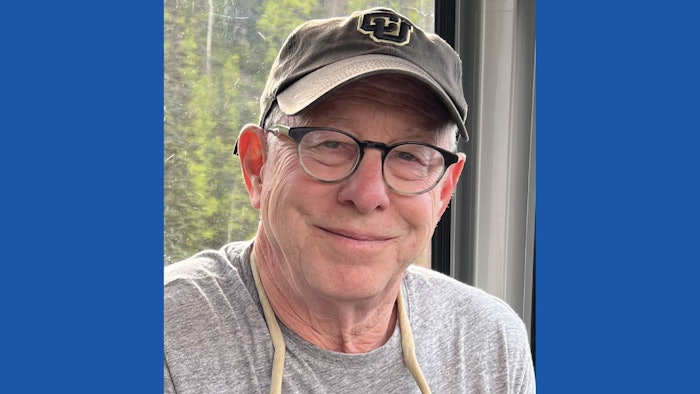
Older anesthesiologists likely remember local anesthetic systemic toxicity, or LAST, as a dreaded complication of regional anesthesia: Unpredictable, no established risk factors, and sometimes fatal despite heroic efforts.
“The only occasionally effective treatment for severe LAST was to put patients on cardiopulmonary bypass or other forms of extracorporeal support,” said Guy L. Weinberg, MD, Professor of Anesthesiology at the University of Illinois College of Medicine in Chicago. “It was uncommon, but when it occurred, it could be devastating. And then, in the late 1990s, I came across lab findings that indicated a possible antidote – the rapid infusion of an off-the-shelf lipid emulsion which, to that point, had only been used for total parenteral nutrition. Twenty-five years later, lipid resuscitation is a recommended and accepted treatment for LAST.”
In 2022, Dr. Weinberg delivered the “John W. Severinghaus Lecture: Local Anesthetic Systemic Toxicity – A Path to Innovation and Discovery.” That chance finding of a potential treatment for LAST lured him back into the lab after a 15-year hiatus and set him on a path leading to other innovations and discoveries, all unexpected and none seemingly related.
Dr. Weinberg said he became an “accidental tourist,” bouncing through resuscitation, statistics, causality, behavioral economics, and other apparently unrelated fields.
“When you see a presentation on the progression of scientific discovery, it looks like you went from A to B, from beginning to endpoint, a logical progression of one step to the next,” he said. “The reality is that discovery is more like Brownian motion; you go in all sorts of different directions, all of them completely unexpected. For instance, along the way, I found that adrenaline doesn’t really work very well for resuscitation, something that was known more than 100 years ago – but we keep forgetting, and it has to be rediscovered by every generation. The observation that you could reverse severe LAST by infusing a lipid emulsion was totally unexpected. We all talk about rare, seemingly impossible events as the black swan. I’ve accumulated a small flock of black swans in the past two decades.”
The unexpected journey started with laboratory findings from an index case and were first reported in 1998. It wasn’t until 2006 that the first two case reports of effective reversal of LAST were published. Both patients had failed to respond to standard resuscitation but recovered quickly after receiving a lipid emulsion that had been commercially available since the 1960s. One case occurred in Germany and the other in New York, Dr. Weinberg said; they were reported in different journals and have become canonical.
Dozens of similarly dramatic resuscitations have been reported over the years, leading to lipid emulsion being included in guidelines from the American Society of Regional Anesthesia and Pain Medicine, the Association for Anaesthetists of Britain and Ireland, and other global bodies. Although Dr. Weinberg and others have documented the mechanisms of action behind lipid resuscitation, there has never been a randomized clinical trial for its use in LAST. However, recent small-scale RCTs show potential efficacy for lipid resuscitation in treating overdoses caused by pesticides, antipsychotics, trazodone, and metoprolol.
“You clearly cannot do randomized controlled trials with toxic doses of local anesthetic toxicity,” he said. “But recently reported trials of lipid emulsion for the treatment of overdoses caused by other, non-local anesthetic agents show they potentially respond in similar ways. This is what translational research is all about, from bench to bedside to bench and back again; a grand circle you could never foresee from that one index case.”
Visit Annual Meeting Daily News for more articles.
